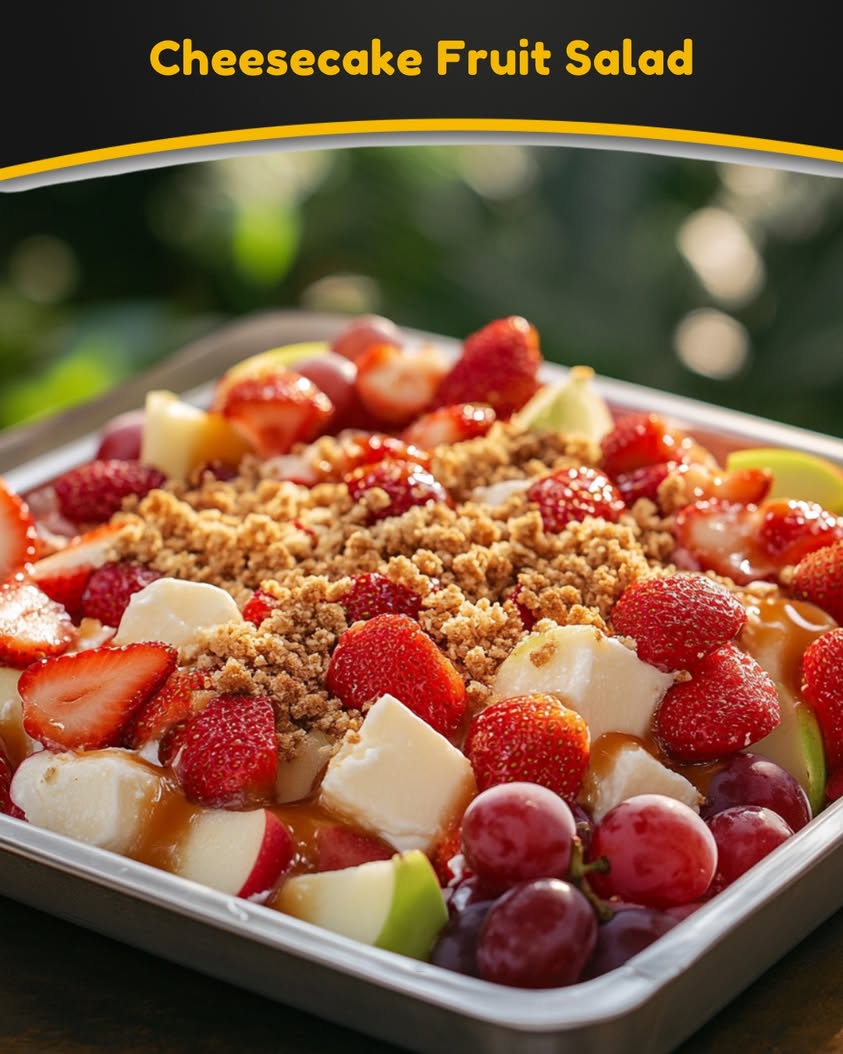Sausage Breakfast Muffins: A Hearty Start to Your Day!
Sausage Breakfast Muffins are the perfect way to kick-start your day with a burst of flavor and comfort. These scrumptious muffins are packed with savory sausage, fluffy eggs, and melty cheese, creating a delightful balance of protein and carbohydrates to fuel your morning. As you take a bite, you’ll experience the satisfying crunch of the golden muffin exterior, leading to a moist and flavorful interior, making every mouthful a pure delight. Whether you’re on the go or enjoying a leisurely brunch, these muffins are the satisfying solution your breakfast routine has been missing.
Not only are these muffins delicious, but they are also incredibly versatile. You can easily customize the ingredients based on your personal preferences or what you have on hand. Feel free to experiment with different types of cheese or add in some vegetables like spinach or bell peppers for a nutrient boost. These muffins can also be made in advance and stored in the fridge or freezer, making them an ideal make-ahead breakfast option for busy mornings, ensuring that you never have to skip the most important meal of the day.
Quick Recipe Highlights
- Flavor Profile: The rich and savory taste of sausage perfectly complements the fluffy muffin, while the cheese adds a creamy texture.
- Texture: A perfect combination of crispy tops and soft, flavorful centers that create an enjoyable mouthfeel with every bite.
- Aroma: The tantalizing smell of baked sausage and melted cheese fills your kitchen, inviting everyone to the breakfast table.
- Visual Appeal: These muffins have a lovely golden brown color, topped with melting cheese, making them visually tempting.
- Skill Level Needed: Perfect for beginners and experienced cooks alike, making them accessible for everyone who wants to try.
- Special Equipment: All you need are standard muffin tins and mixing bowls, keeping the equipment list simple.
Recipe Overview
- Difficulty Level: The Sausage Breakfast Muffins are categorized as easy, allowing new cooks to successfully create a breakfast treat.
- Category: Ideal for breakfast or brunch; these muffins can also be served as a snack at any time of the day.
- Cuisine: With roots in American breakfast traditions, these muffins reflect a comfort food vibe typical of home-cooked morning meals.
- Cost: With economical ingredients, each muffin costs only a fraction to prepare, making them a budget-friendly option.
- Season: Enjoy these muffins year-round; they’re especially great in the colder months, providing warmth and comfort during breakfast.
- Occasion: Perfect for casual breakfasts, brunch gatherings, or even holiday mornings where a special touch is desired.
Why You’ll Love This Recipe
If you’re looking for a satisfying breakfast that not only tastes amazing but is also easy to prepare, then these Sausage Breakfast Muffins are the answer. The delightful blend of savory sausage, eggs, and cheese provides a balanced meal that will keep you full and energized throughout your busy morning. The combination of textures—from crispy tops to soft interiors—adds an exciting element, making each muffin more than just a simple breakfast item.
Convenience is another key benefit of these muffins. They can be prepared quickly, allowing you to whip up a batch before school or work. Additionally, they offer the option to make-ahead and store. You can have nutritious breakfasts ready to go in minutes, simply needing to reheat in the microwave or oven. This is a great way to ensure your family is getting a wholesome breakfast, even on rushed mornings.
From a nutritional standpoint, these muffins are packed with protein from the sausage and eggs, along with cheese that adds calcium without the need for additional toppings. You can also sneak vegetables into the mix without anyone noticing, boosting the health factor and making it easier to meet daily veggie intake goals. With so many benefits, these muffins can easily become a household favorite.
Enjoying breakfast with friends and family is another wonderful aspect of these Sausage Breakfast Muffins. Whether you’re hosting a brunch or just want to share a special morning with loved ones, these muffins invite warmth and togetherness. They are perfect for social gatherings or potlucks, where they can be enjoyed by everyone. You might even find that your guests ask for the recipe!
In terms of cost-effectiveness, this recipe uses inexpensive ingredients that are easy to find in any grocery store. With each muffin costing mere cents to make, you could easily produce a large batch without breaking the bank. This makes them perfect for families or meal preppers looking to maximize value in their meals.
Historical Background and Cultural Significance
Sausage breakfast muffins have a charming history rooted in American breakfast traditions. The incorporation of sausage into breakfast dishes gained popularity in the 19th century when meats became more accessible and breakfast began to take a heavier, heartier route. Muffins, originally made as a light bread, blended into this trend by transforming into a more substantial meal component filled with proteins.
Culturally, breakfast muffins represent the diversity of American cuisine. They reflect a fusion of cultures, combining influences from European breakfast traditions and local ingredients. Over the decades, the introduction of convenience foods and food-processing technologies has allowed these muffins to evolve into a beloved grab-and-go snack option.
As families have become busier, the evolution of the sausage muffin reflects societal changes, adapting to modern-day needs for ready-to-eat meals. What was once a carefully prepared homemade dish has transformed into a quick baked item, and oftentimes, incorporates leftovers, showcasing practicality without sacrificing taste.
Regional variations can be observed as well, with southern influences often adding spices like cayenne or incorporating traditional ingredients like cheese grits into the muffin. Each version has its own distinct flavor and background, but the fundamental concept of a hearty breakfast muffin remains consistent, demonstrating the dish’s adaptability.
Ingredient Deep Dive
Sausage is the cornerstone of these breakfast muffins. Historically, sausage has been a popular protein source because it is flavorful, affordable, and versatile. Nutritionally, sausage provides a good amount of protein and fats, making it a satiating addition to any meal. When selecting sausage for your muffins, opt for fresh, locally sourced varieties if possible. Pay attention to spices and seasonings that complement your desired flavor profile, and consider storing any leftovers in the refrigerator for future meals.
Eggs are another essential ingredient, representing a staple protein source in many diets around the world. They are rich in vitamins and minerals, including B vitamins, iron, and even omega-3 fatty acids when sourced from cage-free or pasture-raised hens. Always choose high-quality eggs for the best results in flavor and nutrition. Store them in a cool, dry place, and for longer shelf life, keep them in the fridge to ensure freshness.
Cheese adds the necessary creaminess and flavor to the muffins. With various options available, from sharp cheddar to gooey mozzarella, you can customize your muffins to suit your palate. Cheese is also high in calcium and vitamin B12, and its rich texture enhances the overall appeal of the muffins. Opt for fresh cheese and check expiration dates when purchasing, and if you find yourself with extra cheese, consider freezing it for later use.
Common Mistakes to Avoid
- Overmixing the batter: This can lead to dense muffins instead of light, fluffy ones. Mix just until combined to maintain texture.
- Ignoring ingredient temperature: Using cold eggs or dairy can lead to uneven cooking. Let ingredients come to room temperature before mixing.
- Not preheating the oven: Skipping this step can affect the rise and baking time of your muffins. Ensure your oven is fully heated for best results.
- Filling muffin tins too full: Overfilling can cause muffins to overflow. Fill only about 2/3 to 3/4 full for optimal rise.
- Not greasing or lining muffin tins: This can lead to sticking. Use paper liners or grease tins thoroughly before adding the batter.
- Underbaking muffins: Always check for doneness using a toothpick. If it comes out wet, give them more time in the oven.
- Skipping the resting time: Letting muffins cool slightly before removing from tins helps maintain their shape and texture.
- Setting the baking temperature too high: Higher temperatures can lead to burnt tops and raw centers. Stick to recommended temps for even baking.
Essential Techniques
Creating the perfect muffin requires a few essential techniques, most notably the ‘muffin method.’ This involves mixing dry ingredients separately from wet, then combining them to promote a light texture. Master this by measuring accurately and mixing carefully, avoiding overmixing, which can cause toughness. The visual cue for success is when the batter is just combined without dry spots.
Another important technique is to allow the muffins to cool in their pans for a short time before transferring them to a cooling rack. This helps to stabilize their structure, preventing them from collapsing. Look for signs of a golden-brown top, indicating they are properly baked while maintaining moisture.
Lastly, understanding temperature control is crucial. Muffins should be baked at the right temperature for a perfect rise. Ensure your oven thermometer is accurate, as incorrect temperatures are a common pitfall. Visual cues include a dome shape and a firm top, indicating they have baked correctly.
Pro Tips for Perfect Sausage Breakfast Muffins
1. Use high-quality sausage for better flavor and try experimenting with spicy or herbed varieties for a unique twist.
2. Incorporate finely chopped vegetables like bell peppers or spinach for added nutrition and flavor depth.
3. If you prefer a lighter texture, separate the eggs and beat the egg whites until fluffy before folding them into the batter.
4. For a gourmet touch, add herbs like thyme or parsley directly into the mix or on top before baking.
5. Use parchment paper liners in muffin tins for easier removal and enhanced presentation at brunch.
6. Make a double batch and freeze leftovers for quick breakfasts; simply reheat them in the microwave or toaster oven.
7. Allow your muffins to cool completely before storing, as this prevents sogginess from trapped steam.
8. Serve warm with a dab of butter or your favorite condiment for added richness and flavor.
Variations and Adaptations
There are numerous regional variations of these sausage breakfast muffins. For instance, adding jalapeños can give them a southern kick, while incorporating herbs like dill can create a garden-fresh flavor profile. Seasonal adaptations, like including pumpkin puree in the mix during fall, can also provide a unique taste experience.
Health-conscious adaptations are also easy to achieve. You can substitute turkey or vegetarian sausage for a leaner option, or even incorporate gluten-free flour to cater to those with dietary restrictions. For vegan diets, replacing eggs with flaxseed meal and the sausage with plant-based alternatives keeps the essence intact.
Additionally, you can explore different flavors by experimenting with cheeses or adding spices such as cumin or paprika, taking your muffins to new culinary heights. Presentation plays a vital role as well; consider serving your muffins on a bed of mixed greens, adding a fresh touch that elevates the dish visually.
Serving and Presentation Guide
Presenting your Sausage Breakfast Muffins in an appealing way can enhance the breakfast experience. Start with a clean serving plate; you can arrange the muffins in a fan shape to showcase their delightful tops. A sprinkle of fresh herbs or parmesan can add a pop of color and flavor.
Garnishing is simple yet effective. Top each muffin with a dollop of sour cream or a slice of avocado for creaminess. Consider adding some sliced tomatoes or a small salad on the side for a fresh balance.
Offering traditional accompaniments like jams, jellies, or hot sauce provides options for guests and adds variety to the meal. If you prefer a modern twist, try presenting your muffins in a rustic basket lined with a cloth, creating an inviting and homey feel.
Temperature considerations are also important; serve the muffins warm, as they taste their best fresh from the oven. For portion control, serve muffins alongside other breakfast items such as fruit or yogurt to create a balanced meal without overwhelming servings.
Wine and Beverage Pairing
When it comes to beverages that pair well with Sausage Breakfast Muffins, consider a crisp white wine like Sauvignon Blanc, which complements the savory flavors without overpowering them. If you prefer sparkling, a light Prosecco works beautifully, enhancing the experience with its effervescent quality.
For non-alcoholic alternatives, freshly squeezed orange juice provides a refreshing citrus contrast that brightens the meal. Alternatively, a spiced chai or herbal tea can add warmth and comfort, making for a cozy morning treat.
If you’re feeling indulgent, opt for a bold cup of dark roast coffee, which pairs excellently with the muffins’ hearty flavors. Just ensure beverages are served at the right temperature; warm drinks balance well with the temperature of the muffins.
Storage and Shelf Life
To maximize the shelf life of your Sausage Breakfast Muffins, store them in an airtight container at room temperature for up to 3 days. For longer storage, transfer them to the fridge where they can last about a week. If freezing, wrap each muffin tightly in foil or plastic wrap and store them in a heavy-duty freezer bag for up to 3 months.
Signs of spoilage include an off-smell, visible mold, or a change in texture. Reheating is simple; you can use the microwave for a quick option or air fryer for a crunchy exterior.
When reheating, ensure they reach an internal temperature of 165°F to ensure safety and quality. Freezing is a great long-term solution, allowing you the convenience of having homemade muffins ready to go anytime.
Make Ahead Strategies
Making Sausage Breakfast Muffins ahead of time is simple and efficient. You can easily prepare the batter the evening before and store it in the refrigerator. This allows the flavors to meld overnight, enhancing the taste when baked.
Alternatively, bake a large batch, allow them to cool, and then individually wrap them for easy grab-and-go breakfasts. Consider portioning them into snack bags for quick accessibility during busy mornings.
Quality is key, so be sure to follow proper storage guidelines to maintain the muffins’ freshness. Include a note in your storage guide on which muffins you’ve frozen or refrigerated, allowing for quick meal decisions during the week.
If you want to freshen up the muffins just before serving, add a sprinkle of fresh herbs or a dollop of your favorite sauce right before enjoying. This adds a new life and flavor dimension to previously made muffins.
Scaling Instructions
Scaling the recipe up or down is straightforward. If you want to halve the recipe, simply divide all ingredient quantities by two. Consider the size of your muffin tins; if you’re producing fewer muffins, smaller tins can be a good choice to maintain ideal proportions.
When doubling or tripling the recipe, keep in mind the cooking time may vary slightly, so always use a toothpick to test for doneness. Larger quantities also require larger mixing bowls or possibly dividing into batches.
Equipment adjustments may also be necessary; using more than one muffin tin could help manage larger batches. Finally, ensure to adjust the storage methods appropriately, keeping environment stability as muffins should not cool down too rapidly.
Nutritional Deep Dive
Analyzing the nutritional content of these muffins, you’ll find they are rich in protein, primarily from the sausage and eggs, with a good balance of fats and carbohydrates. A typical muffin can contain around 200 calories, but it varies based on your specific ingredient choices.
Micronutrient-wise, these muffins offer essential vitamins and minerals, including B vitamins from the eggs, and iron and zinc from the sausage. Nutritional density increases if you add vegetables, improving fiber and vitamin profiles.
Health benefits include not only satiety from protein but also sustained energy from carbohydrate sources. Portion control is important; consider enjoying these muffins as part of a balanced breakfast along with fruit or a side of yogurt.
Weight management is supported through protein intake, which can help with cravings and keeping you full. By adjusting ingredient ratios and adding whole grains, you can tailor these muffins to better fit your dietary goals.
Dietary Adaptations
For gluten-free adaptations, swap regular flour with a gluten-free blend, ensuring you use certified gluten-free sausage to keep the entire dish compliant. For a dairy-free version, replace cheese with a nut-based alternative, ensuring to enhance flavors with spices.
If you’re looking for a vegan option, substitute eggs with a flaxseed mixture and use plant-based sausage. Any added vegetables or beans can further enhance nutrition and texture, making them hearty and filling.
Low-carb options are achievable by using almond flour instead of wheat flour and turkey sausage for lower carbohydrates. These muffins can also fit into a Keto diet if the right ingredients are selected, emphasizing protein and healthy fats.
Paleo dieters can enjoy these muffins by using almond or coconut flour and eliminating processed sausage, choosing fresh, organic meat instead. Customize these muffins easily by recipe modification depending on specific dietary needs.
Troubleshooting Guide
If you experience texture issues like dense muffins, ensure you haven’t overmixed the batter. Also, keep an eye on the baking times—too little time can leave them soggy and dense.
Flavor balance problems often arise from too much salt or spices. Adjusting the seasoning with fresh herbs or squeezing in lemon juice can enhance taste profiles positively.
Temperature problems such as undercooked muffins can be solved by lowering the oven temperature for even baking, as uneven heat can cause hot spots. Additionally, check oven calibration regularly for accuracy.
If you face challenges with equipment like muffin tins, consider using liners or greasing generously to prevent sticking. If you’ve run out of a key ingredient, innovative substitutions, like applesauce for eggs or mashed bananas, can maintain flavor and moisture.
Timing concerns typically derive from busy schedules; consider batch cooking on designated cooking days to alleviate time pressures during the week.
Recipe Success Stories
Community feedback on Sausage Breakfast Muffins often highlights how easy they are to prepare while still achieving a gourmet feel. Many cooks praise the flexibility in ingredients, allowing for various family preferences while maintaining a consistent level of deliciousness.
Readers have shared their variations, highlighting how the incorporation of seasonal veggies or different types of bread led to successful outcomes, inviting even picky eaters to the breakfast table.
Adaptation stories include families who transformed their muffin sessions into enjoyable bonding experiences, making them a monthly tradition where experimentation is encouraged, resulting in creative and exciting flavors.
Photography tips involve capturing freshness; taking shots of the muffins just as they come out of the oven showcases their golden tops and steamy interiors, making them harder to resist.
Frequently Asked Questions
2. How long will the muffins last in the fridge? Sausage Breakfast Muffins can be stored in the refrigerator for about a week if kept in an airtight container.
3. Can I substitute the sausage? Absolutely! You can replace it with turkey sausage, vegetarian sausage, or even skip it entirely for a more veggie-focused muffin.
4. Do I have to use cheese? No, cheese is optional. You can omit it or replace it with a dairy-free alternative if you prefer.
5. How can I make these muffins healthier? Consider adding finely chopped vegetables, using whole-grain flour, or reducing the amount of cheese to boost the nutritional profile.
6. What can I serve with the muffins? These muffins pair well with fresh fruit, a side of yogurt, or even a light salad for a complete breakfast.
7. How do I know when the muffins are done? Insert a toothpick into the center; if it comes out clean or with a few crumbs, they’re ready.
8. Can I make these ahead of time? Yes, you can prep them a day in advance or even freeze them for quick breakfasts amidst a busy schedule.
9. What’s the best way to reheat them? You can reheat muffins in the oven or toaster oven at 350°F for about 10 minutes or in the microwave for 30 seconds to 1 minute.
10. Can I add herbs or spices? Definitely! Adding herbs can enhance flavor. Try basil, thyme, or Italian seasoning depending on your preference.
Additional Resources
To further enhance your breakfast repertoire, explore related recipes such as veggie breakfast muffins, mini quiches, or savory breakfast wraps. Technique guides on baking fundamentals can also help improve your overall baking skills, ensuring perfect results every time.
Understanding the ingredients used can also deepen your cooking experience, so consider learning about different types of whole grains or healthy fats. Equipment recommendations for quality muffin tins and mixing tools are vital for consistent results and ease of baking.
Seasonal variations in ingredients are essential; consider swapping seasonal produce into your muffin mix to keep things fresh and exciting throughout the year.
Join the Conversation
Join our community by sharing your experiences with Sausage Breakfast Muffins on social media. Use vibrant images to capture the creativity of your baking and engage with fellow food enthusiasts. Explore variations they have tried, sharing ideas and triumphs within the community.
Photography tips play a crucial role in showcasing your culinary creations effectively. Bright natural light often gives rich colors, and focusing on angle and depth can dramatically improve food visuals in social posts.
Encourage recipe reviews among peers to foster engagement and feedback, paving the way for collaborative recipe development and improvement.
Try to offer insights into your own twists or adaptations on the original recipe. This collaboration within the cooking community is invaluable and builds excitement around traditional recipes reimagined for modern tastes.
The Recipe
Sausage Breakfast Muffins
Serves: 12 muffins
Prep Time: 15 mins
Cook Time: 20 mins
Total Time: 35 mins
Kitchen Equipment Needed
- Muffin tins
- Mixing bowls
- Measuring cups and spoons
- Whisk
- Spatula
Ingredients
- 1 pound sausage
- 2 cups all-purpose flour
- 1 tablespoon baking powder
- 1/2 teaspoon salt
- 1/2 teaspoon black pepper
- 3 large eggs
- 1 cup milk
- 1 cup shredded cheese (cheddar or your choice)
Directions
- Preheat the oven to 375°F (190°C). Grease or line muffin tins.
- Cook the sausage in a skillet over medium heat until browned; drain excess fat and let cool.
- In a mixing bowl, whisk together the flour, baking powder, salt, and pepper.
- In another bowl, beat the eggs and then stir in the milk.
- Add the egg mixture to the flour mixture, stirring until just combined.
- Fold in the cooked sausage and cheese until evenly distributed.
- Divide the batter among the prepared muffin tins, filling them 2/3 full.
- Bake for 20-25 minutes or until a toothpick inserted in the center comes out clean.
- Let cool in the pans for a few minutes before transferring to a wire rack.
Recipe Notes
- Feel free to mix in vegetables like spinach or bell peppers for additional nutrition.
- For a spicy kick, try using hot sausage or adding crushed red pepper.
- These muffins freeze well; wrap them tightly and store for a quick breakfast option later.










